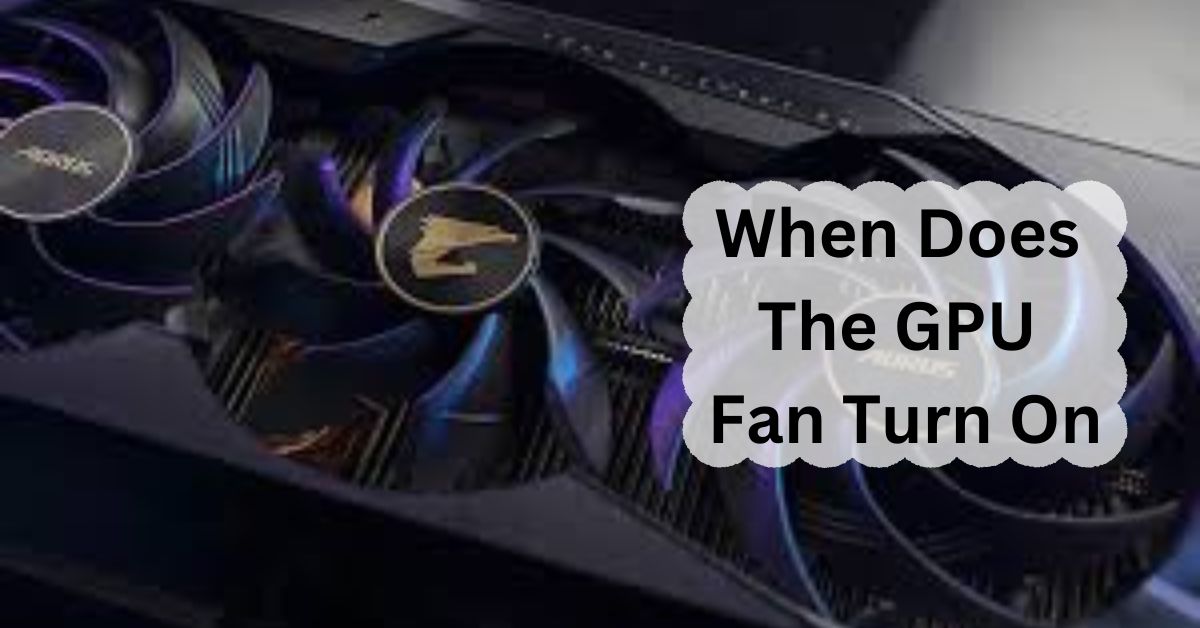GPU (Graphics Processing Unit) fan is a crucial part of your computer’s cooling system. It helps to keep the GPU cool by dissipating heat generated during intense graphical tasks. The fan works in conjunction with heat sinks and other cooling components to maintain optimal temperatures.
The GPU fan turns on when the graphics card temperature rises, usually during gaming or heavy tasks. It helps cool down the GPU, preventing overheating. Some fans stay off at low temperatures and only activate when needed.
In this article, we will discuss “When Does The GPU Fan Turn On”.
Table of Contents
Why is GPU Cooling Important?
Cooling is essential for the GPU to function efficiently. If the GPU gets too hot, it can lead to performance drops, known as throttling, or even permanent damage. Proper cooling ensures that your graphics card performs at its best and lasts longer.
Factors Affecting GPU Fan Operation:
1. GPU Temperature Sensors:
Modern GPUs are equipped with temperature sensors that constantly monitor the heat levels. These sensors trigger the fan based on predefined temperature thresholds to prevent overheating.
3. System Load and Usage:
The fan’s operation can also be influenced by the GPU’s workload. Higher usage, like playing graphics-intensive games or running multiple applications, generates more heat, causing the fan to work harder.
Types of GPU Cooling Systems:
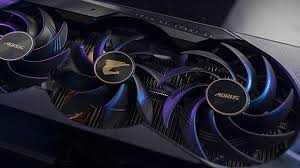
1. Active Cooling:
Active cooling systems use fans to actively move air over the GPU and heat sinks. This method is common in most modern GPUs and is effective in keeping temperatures in check.
2. Passive Cooling:
Passive cooling relies on heat sinks and natural convection to dissipate heat without using fans. It’s generally less effective than active cooling but is quieter.
3. Hybrid Cooling:
Hybrid systems combine both active and passive cooling methods. They often use a fan and a heat sink together to provide efficient cooling.
How to Monitor GPU Fan Activity:
1. Using Software Tools:
There are various software tools available that let you monitor your GPU fan speed and temperature. Programs like MSI Afterburner or GPU-Z can give you real-time data and alerts.
2. BIOS Settings:
Some systems allow you to monitor and adjust GPU fan settings through the BIOS/UEFI. This method can provide more control over the fan’s operation.
Adjusting GPU Fan Settings:
1. Through Software:
Software like MSI Afterburner or ASUS GPU Tweak allows users to set custom fan profiles. You can adjust when and how the fan speeds up based on your needs.
2. BIOS/UEFI Configuration:
You can also configure fan settings directly from the BIOS/UEFI. This method provides a more permanent solution compared to software adjustments.
Signs of GPU Fan Issues:
1. Unusual Noise:
If your GPU fan is making strange noises, it could indicate a problem. Grinding or clicking noises can be a sign of damage or debris.
2. Inconsistent Fan Speeds:
Fluctuations in fan speed that don’t correlate with GPU temperature or load may suggest an issue with the fan or its controller.
Read: Can Old Motherboard Support New GPU – A Guide of 2024!
Troubleshooting GPU Fan Problems:
1. Checking for Dust and Debris:
Dust can clog up the fan and hinder its performance. Regular cleaning is essential to keep the fan running smoothly.
2. Ensuring Proper Connection:
Make sure the fan is properly connected to the GPU and power source. Loose connections can cause the fan to malfunction.
Maintaining Your GPU Fan:
1. Regular Cleaning:
Clean your GPU fan regularly to prevent dust buildup. Use compressed air to blow out dust and keep the fan blades clean.
2. Ensuring Adequate Airflow:
Ensure that your PC case has good airflow. Proper ventilation helps in maintaining optimal temperatures and prolongs the life of your components.
Are GPU fans supposed to spin on startup?
No, GPU fans usually don’t spin at startup. They often stay off until the GPU reaches a certain temperature. This is normal and helps reduce noise and wear on the fans.
Are GPU fans supposed to spin all the time?
No, GPU fans are not supposed to spin all the time. They usually spin only when the GPU gets hot. When the GPU is cool, the fans may stop to save energy and reduce noise.
What temp do GPU fans turn on?
GPU fans usually turn on when the temperature reaches around 50 to 60 degrees Celsius. This helps keep the GPU cool during tasks that require more processing power.
Do GPU Fans Always Spin?
No, GPU fans do not always spin. They typically stay off when the GPU is cool and start spinning when the temperature rises to keep the GPU from overheating during heavy tasks.
GPU fans not spinning? Way to fix it
1. Test the GPU Under Heavy Load
2. Reseat the GPU and Check the Cables
3. Clean the Dust From the GPU
4. Update the GPU Drivers
5. Control the GPU Fan Curve
6. Test the GPU on Another System
7. Return the GPU to the Manufacturer
How to turn on GPU fans AMD?
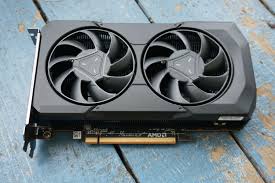
To turn on AMD GPU fans, use the AMD Radeon Software. Go to “Performance” > “Tuning,” then adjust the fan speed settings manually to make the fans spin faster or stay on constantly.
Can You Make Your GPU Fans Always Spin?
Yes, you can make your GPU fans always spin by adjusting the fan settings in your GPU control software. Set the fan speed manually to a constant level to keep them spinning all the time.
Why do GPU fans always spin?
GPU fans always spin if the temperature is consistently high or if the fan settings are set to run continuously. This helps prevent overheating by ensuring the GPU stays cool during use.
How to turn on GPU fans nvidia?
To turn on NVIDIA GPU fans, use the NVIDIA Control Panel or MSI Afterburner. Go to the fan settings and manually adjust the fan speed to make them spin faster or stay on continuously.
How often are GPU fans supposed to run?
GPU fans are supposed to run whenever the GPU gets hot, usually during gaming or heavy tasks. They stop when the GPU cools down to save energy and reduce noise.
How do I turn on my fan on my graphics card?
To turn on the fan on your graphics card, use software like MSI Afterburner or your GPU’s control panel. Adjust the fan speed settings manually to make the fan spin continuously or at higher speeds.
Is my GPU fan broken?
Your GPU fan might be broken if it doesn’t spin or makes unusual noises. Check if the fan is physically blocked or use software to test its operation. If issues persist, consider getting it checked or replaced.
Is gpu fan supposed to spin always?
No, GPU fans are not supposed to spin all the time. They usually spin when the GPU gets hot and stop when the GPU cools down to save energy and reduce noise.
Should graphics card fans always spin?
Graphics card fans should not always spin. They typically spin when the card gets hot and stop when it cools down. This helps manage temperature and reduce noise when the card is not under heavy use.
When should my graphics card fans turn on?
Your graphics card fans should turn on when the GPU gets hot, usually above 50 to 60 degrees Celsius. They help cool the GPU during heavy use or gaming to prevent overheating.
Is it normal for GPU fans to not spin?
Yes, it’s normal for GPU fans to not spin when the graphics card is cool. Many GPUs only start their fans when the temperature rises during heavy use to reduce noise and wear.
What temp do my GPU fans turn on?
GPU fans usually turn on when the temperature reaches around 50-60°C (122-140°F). This helps to cool the GPU when it’s under heavy use. The exact temperature can vary by model.
How to make GPU fans turn on?
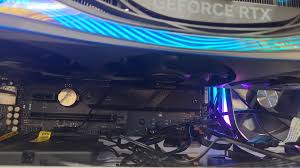
To make GPU fans turn on, you can increase the load on the GPU by running a game or software. You can also use fan control software to manually start the fans if needed.
FAQs:
1. What is the ideal temperature for a GPU?
The ideal temperature for a GPU under load is usually between 65-85°C (149-185°F). Keeping it within this range ensures good performance and longevity. Idle temperatures are typically lower, around 30-50°C (86-122°F).
2. How can I tell if my GPU fan is working correctly?
To check if your GPU fan is working correctly, observe if it spins when the GPU is under heavy use. You can also monitor fan speed using software like MSI Afterburner or GPU-Z.
3. What are the signs that my GPU is overheating?
The ideal temperature for a GPU during heavy use is between 65-85°C (149-185°F). Staying within this range helps maintain good performance and avoids damage. Lower temperatures, around 30-50°C (86-122°F), are normal when idle.
4. Can I replace my GPU fan myself?
Yes, you can replace your GPU fan yourself if you have the right tools and follow a guide. Be careful to avoid damaging the GPU. If unsure, consider getting professional help.
5. How often should I clean my GPU fan?
You should clean your GPU fan every 3 to 6 months to prevent dust buildup. This helps keep the fan running smoothly and ensures your GPU stays cool during use.
Conclusion:
In conclusion, GPU fans are crucial for keeping your graphics card cool and performing well. They typically spin when the GPU gets hot, like during gaming, and stop when it’s cool. Regular cleaning and monitoring can help maintain their efficiency. If you notice issues, check for dust, connections, or consider adjusting settings with software.
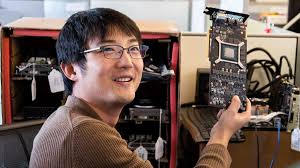
I’m Noah Lucas, the voice behind the content you find here. With 5 years of experience in the GPU field, my goal is to provide clear and helpful information to everyone interested in this technology.
Whether you’re new to GPUs or looking to deepen your understanding, my articles aim to break down complex topics into simple, easy-to-understand language. This way, no matter where you’re from, you can find the information you need without any confusion.

